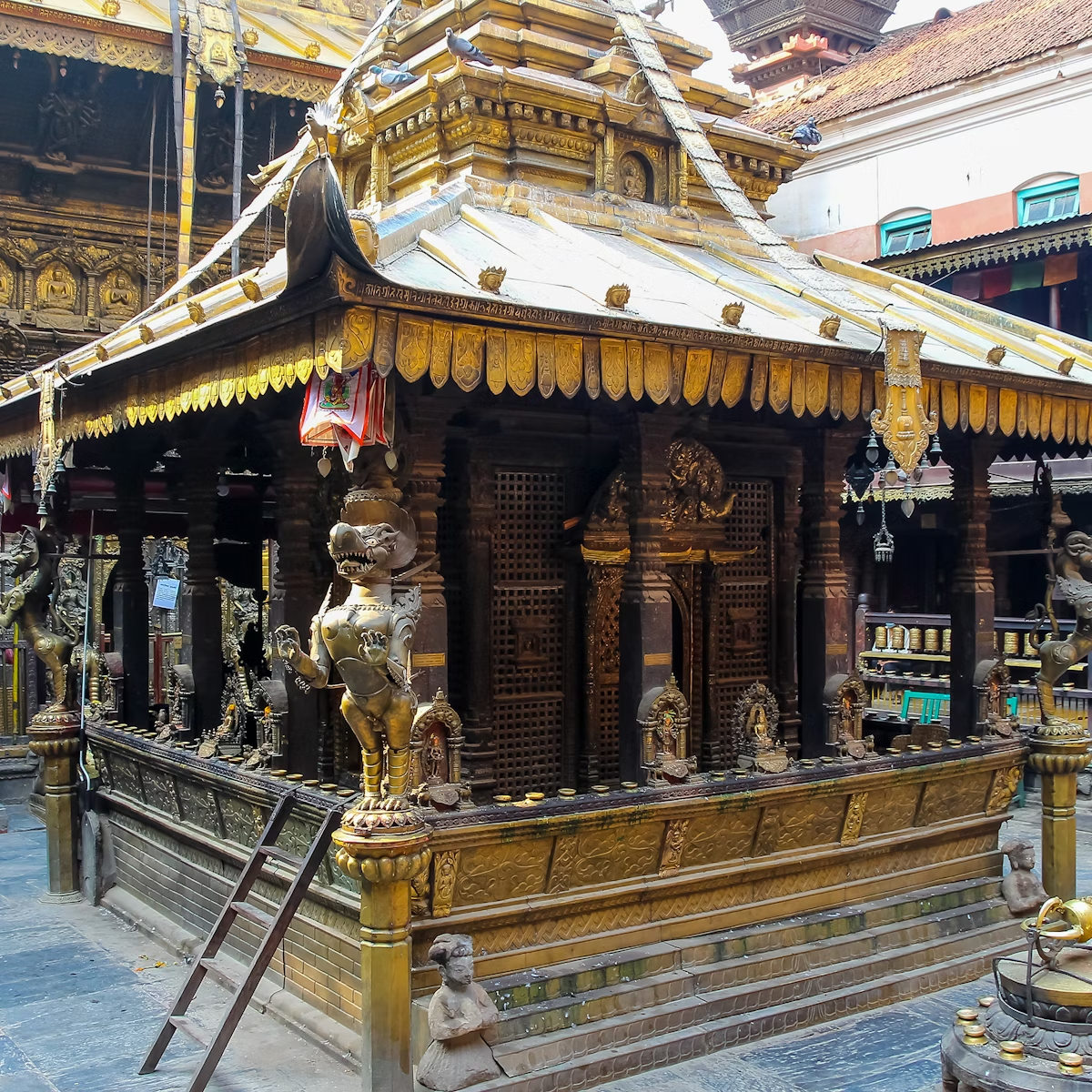Dedicated to Shiva as Mahadeva (Great God), this handsome three-tiered temple is a fine example of Newari pagoda style. The main reason to come is to see the exquisite stone carvings dotted around the compound, some dating back more than a thousand years.
The sculptures provide an A to Z of Hindu deities, from Aditya (the sun god), Brahma and Chandra (the moon god) to Indra (the elephant-borne god of war and weather) and Ganga (with four arms and a pot on her head from which pours the Ganges). Vishnu is depicted as Narsingha, making a particularly thorough job of disembowelling the demon Hiranyakashipu, while Shiva makes several appearances, including as Kamadeva, the god of love, complete with one suitably erect celestial body part.
The god Gauri Shankar is interesting since it contains elements of both Shiva and Parvati. The goddess appears on her own, wearing a dress and standing on a snow lion, in a particularly elegant statue in the northwest corner of the compound. The Brahma figure in the southwest corner appears to have only three heads (he should have four) until you peer around the back and discover the hidden head. Many of the deities have one foot on their vahana (spiritual vehicle). Shiva’s vehicle Nandi appears as a large statue made of brass laid over a stone base, in front of the main temple, and Shiva is venerated in the form of an enormous lingam inside the main chamber. There’s some fine woodcarving on the temple struts.
Behind the temple, just above the river, is the Vishnu Paduka, a low pavilion enshrining a metal plate with a footprint of Vishnu. Just in front is an image of Narayan reclining on a bed of snakes, just like the images at Budhanilkantha and Balaju. To the north of the pavilion is an earthquake-damaged shrine that has almost been consumed by a fig tree that must have started as a seed on its roof.
Nepalis who have recently lost a father often visit the temple, particularly during Gokarna Aunsi, the Nepali equivalent of Father’s Day, which falls in September.







